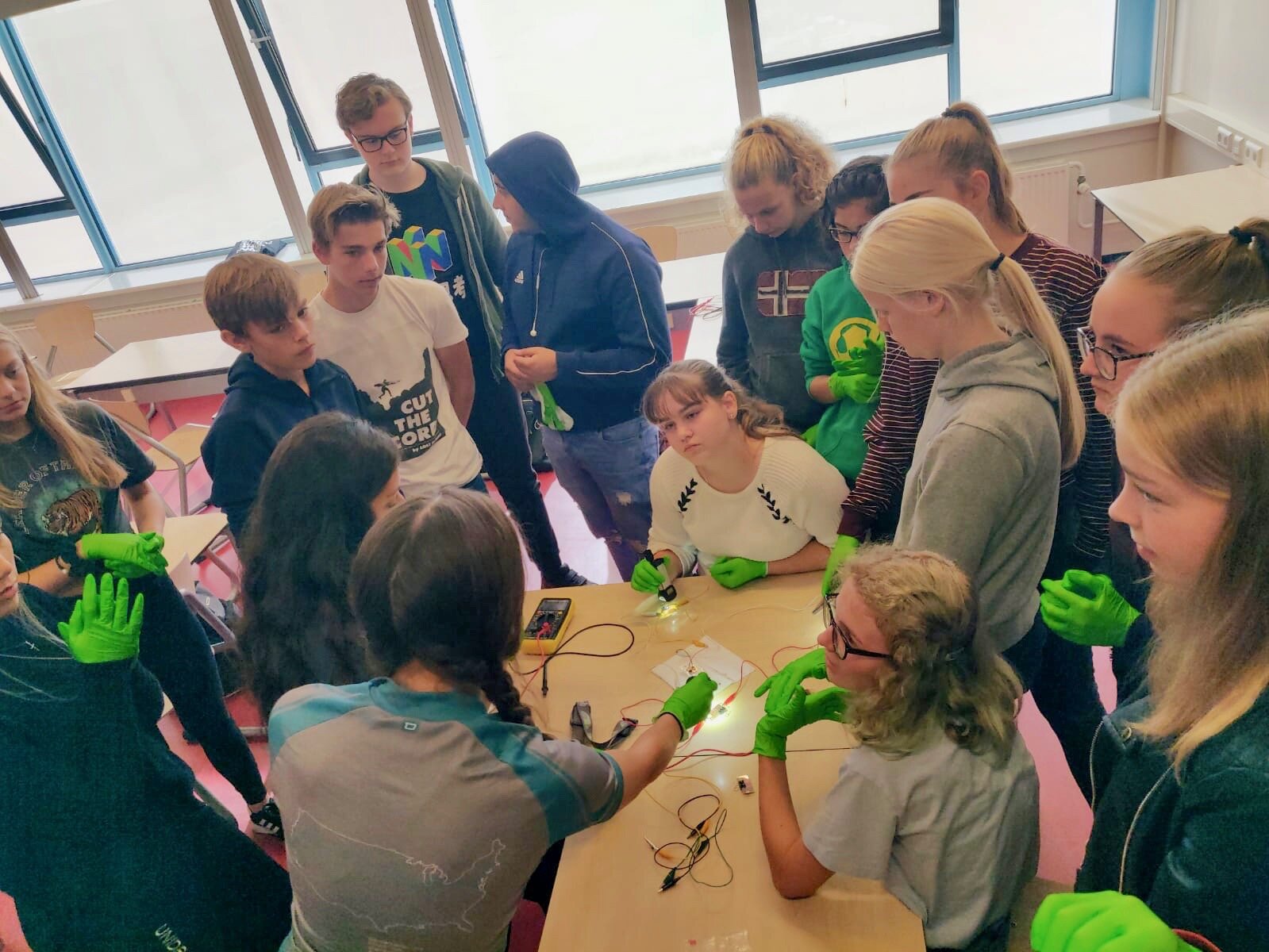xNetherlands Blog!
Welcome to the 2019 Netherlands trip blog for Cycle for Science Materials! Below are Rachel Woods-Robinson’s blog posts that we’ve sent out via our newsletter (subscribe here!)
One group of girls declared from the start that they were bad at science, and that they didn’t want to be on their own team because “we suck and we always break everything.” I admitted I broke things in the lab too, but that didn’t stop me from being a scientist, and I nudged them to just give it a try and they might surprise themselves (we had an extra setup without a team). Eventually, it was these girls who made the solar cells with the highest voltage we’d measured out of all the cells on the trip!
Not only did we make blackberry-based-solar-cells, measure their current and voltage with multimeters, and link them up together to test them…but we focused on how and why we’d entered careers in science. I shared my circuitous path into science -- how I had no interest when I was their age, mostly because I was bored by having answers forced at me and I had no clue what scientists even did. How I started college for music, but then grew more passionate about science research when I learned it was (1) crucial for solving global challenges like climate change, (2) research was actually a really fun and creative process, and (3) there were real jobs out there for people like me. (read more)
“Despite the initial barrage of teenage apathy from her peers, the girl in the front row remained engaged and asked questions, and then came up to us after the lesson for the following interaction:
Rachel: What do you like about science?
Girl (pauses to think): You can discover new things. You can take two different parts and put them together to make something better than the two parts.
Rachel: Yeah! I actually do that in my lab every day! Except I have even more materials to start with, from all over the periodic table.
Girl: Woooaahhhhhhh!!! I want to do that!
As she left the classroom beaming, we were instantly reminded why it's so important for us to share our passion for science with kids, and why we went on this trip. In just 45 minutes of our time we can instill a real image of who scientists are, provide a tangible example of what we do every day, and make the link that our career path is accessible to anybody who is curious and passionate about discovering new things. And that these discoveries can compound to be greater than the individual parts, and lead towards real sustainable societal change.” (read more)
The classrooms were decked out in colorful periodic tables so we had the students brainstorm which elements were in solar cells (and where on Earth they came from), and we also explained with diagrams on the board how charge moved between layers of the solar cells. The students were receptive and bright-eyed; we asked if they'd ever made their own solar cells, and they all said no, and got giddy when they learned what was in store for them that day. (read more)
Like in the USA, cars became cheap and dominant in the 1960s in the Netherlands, but in the 1970s something changed. There were massive popular revolts against automobiles. Why? The Dutch were primarily protesting the high number of child deaths due to cars, in a movement led by “Stop de Kindermoord” (“Stop the Child Murder”) campaign. This movement, coupled with the 1973-4 oil shortage and the popularization of the 1970s Dutch “CROW Design Manual for Bicycle Traffic”, was enough to propel Dutch politicians and the prime minister to seriously incorporate the needs of cyclists into all stages of urban planning. We're talkin: constructing safe and connected infrastructure (140,000 km of fietspaden), clearly labeled paths and networks, tons of bike parking, limited car access in towns, … (read more to find out!)
Every student was able to participate in a small group that made their very own solar cell, demonstrate that it works in the presence of ambient light, and test the changing conditions under “one sun” (aka our bike lights, since the sun was hiding). We then gathered in a group to compare these to a few silicon cells and modules, and watched the faces of ooos and aahhs as we used a few silicon cells in series, hooked them to an induction coil, shined our bicycle lights on the cells, and demonstrated the transfer of energy from photons to electrons to an electromagnetic field back to electrons and back to photons again! (read more)
We soon met that quintessential Dutch countryside life we’d be getting to know over the next week: giant windmills, green fields, corn fields, yellow canola fields, thatched-roof houses, gambrel-roof houses (classic Dutch style with two slopes on each side), beautiful paved and connected “fietspaden” (bike paths) away from roads, and long relaxed conversations as we didn’t have to worry about getting smashed by a gas guzzler at every pedal stroke. (read more)





